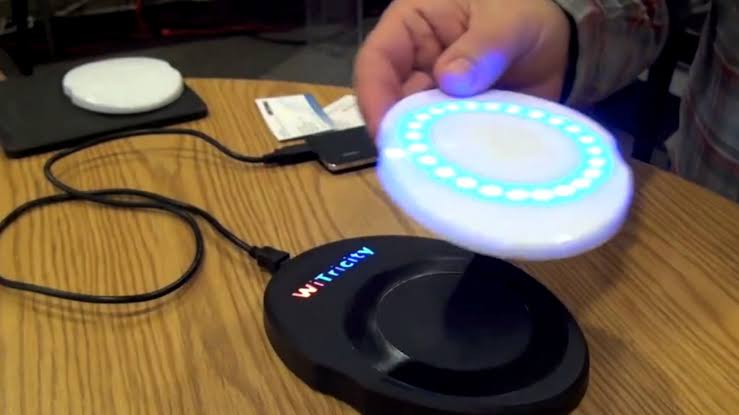The wireless power transmission techniques mainly fall into two categories, which are near field and far field.
In near field or non-radiative techniques, power is transferred over short distances by magnetic fields using inductive coupling between coils of wire, or by electric fields using capacitive coupling between metal electrodes.
Inductive coupling is the most widely used wireless technology.
its applications include charging handheld devices like phones and electric toothbrushes, RFID tags, induction cooking, and wirelessly charging or continuous wireless power transfer in implantable medical devices like artificial cardiac pacemakers, or electric vehicles.
In far-field or radiative techniques, electric power is transmitted wirelessly by a huge giant coil, such as a Tesla coil. Through resonant coupling, Tesla was able to transfer electricity wirelessly along a distance of over 200 miles. But this techniques is not efficient, because their is wastage of energy.
•Resonant coupling.
Resonant coupling is a method of power transfer, which is use to transfer energy over 1 meter. It is a wireless method for items that requires much wattage and power, such as an electric car, wireless phone charger and laptops.
For a very long time, engineering have known that resonance causes objects to reverberate when energy of a certain frequency or pitch is applied. In resonance coupling, two copper coils are used.
One of the coil is connected to a power source and this coil is known as the transmitter.
The other coil is attached to a load, is the receiver. Both coils are tuned to the same electromagnetic frequency by means of a capacitor.
When objects of the same resonant frequency are placed close to one another, the energy produced can be transferred from one to the other.
A capacitor of low capacitance is connected in series or parallel to the coils each to form an LC circuit.
esonant transfer works by making a coil ring with an oscillating current. This generates an oscillating magnetic field. Because the coil is highly resonant, any energy placed in the coil dies away relatively slowly over very many cycles; but if a second coil is brought near it, the coil can pick up most of the energy before it is lost, even if it is some distance away
It's is more efficient than inductive coupling.
Resonant coupling works by making a coil ring with an oscillating current. This generates an oscillating magnetic field. Because the coil is highly resonant, any energy placed in the coil dies away relatively slowly over very many cycles; but if a second coil is brought near it, the coil can pick up most of the energy before it is lost, even if it is some distance away
•Inductive or magnetic coupling.
That is, when a coil with changing magnetic field is brought in contact with another coil, they are said to be coupled magnetically or by induction, because they are both linked together by the changing magnetic field of the transmitter.
A changing or varing current through the first wire creates a changing magnetic field around it.
The changing magnetic field induces an electromotive force (EMF or voltage) in the second wire by Faraday's law of induction. The amount of inductive coupling between two conductors is measured by their mutual inductance.
Coupling can also be increased by a magnetic core of a ferro magnetic material like iron or ferrite in the coils, which increases the magnetic flux. The two coils may be physically contained in a single unit, as in the primary and secondary windings of a transformer, or may be separated.
This method of wireless power transmission can only be used to transfer energy within short distance.
The receiving coil needs to be placed in the transmitter magnetic field, or else energy would be wasted without any actual transfer of energy.
Tags:
Wi-Tricity & Telecom


